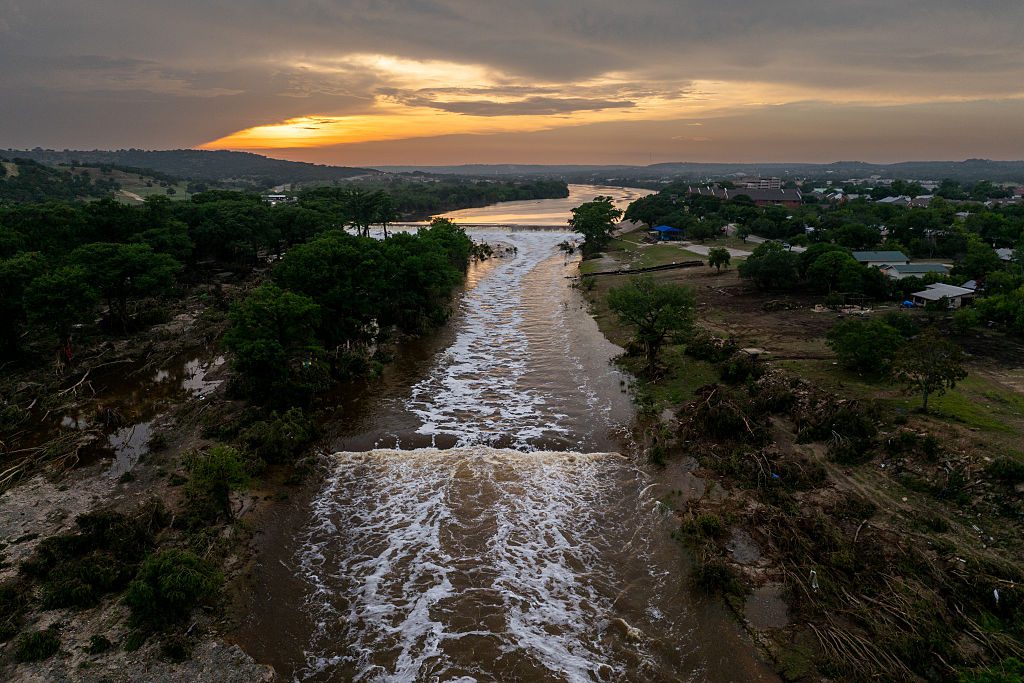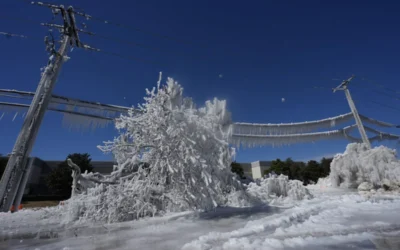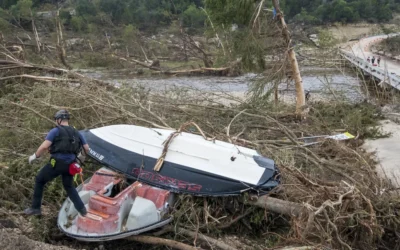
KERRVILLE, TEXAS - JULY 06: In an aerial view, the sun sets over the Guadalupe River on July 06, 2025 in Kerrville, Texas. Heavy rainfall caused severe flooding along the Guadalupe River in central Texas, leaving more than 80 people reported dead. (Photo by Brandon Bell/Getty Images)
The floods in Central Texas have devastated thousands. Over the July Fourth weekend, intense rainfall turned deadly in Flash Flood Alley. In Hunt, a summer camp was washed away. More than 100 people are still missing, and over 130 people have died.
Unfortunately, floods caused by hurricanes, ice jams, and heavy rain are common in Texas. Climate change is increasing the intensity of natural disasters. It is imperative to know what your insurance will and will not cover. For instance, a home insurance policy’s basic coverage may cover water damage through broken pipes; however, it won’t pay for flood damage. Flood insurance will cover damages caused by natural flooding.
With Texas becoming increasingly flood-prone, being prepared is more important than ever. Follow these steps when reporting flood damage through your standard homeowners or renters insurance.
Step 1: Contact your insurance agent or company
Contact your insurance company as soon as you notice flood damage. Your insurance company will assign you an insurance adjuster who should reach out within 48 hours of filing your claim.
Step 2: Prepare for your inspection
An insurance adjuster will be responsible for inspecting your property. They assess the damage and recommend a payout amount to the insurer. When the adjuster arrives, be ready with your policy number, your insurance company’s contact information, and your mortgage information.
During the inspection process, keep documentation of everything, including structural damage, floodwater levels, and damaged appliances. Take videos and photos of all your belongings. Capture the make, model, and serial numbers of all your appliances. Keep photos and samples of damaged building materials, such as carpet, drywall, and flooring, for reference.
Before you dispose of anything that might be a health risk, such as soaked furniture, food, or moldy items, be sure to document it first.
Before using any power in your home, contact an electrician.
Step 3: Work closely with your adjuster
Your adjuster is going to be with you for the foreseeable future. You can ask questions about your policy’s coverage and any deadlines that you may need to meet. Get everything in writing—verbal confirmation will not suffice.
Your adjuster should provide you with official identification before conducting their assessment, including a Flood Control Number and the name of their adjusting firm. If an insurance adjuster cannot verify the listed items, they may be a scammer.
Ask your adjuster about advance payments to help begin your recovery process while the claim is being processed.
The federal government will support flood insurance through the National Flood Insurance Program.
If insurance doesn’t cover you or you need more help
If your area is under a Presidential Disaster Declaration, you can register for disaster assistance with the Federal Emergency Management Agency to access more recovery resources. FEMA is designed to support those who have been affected by a natural disaster. They help with search efforts, emergency sheltering, home repairs, and decreasing safety hazards.
According to the official FEMA website, you can only apply for assistance after your community receives a major disaster declaration. Even then, FEMA’s Individual Assistance program is only available after the president makes a federal declaration.
When it’s time to make repairs, always contact your community’s building department and floodplain administrator for safety guidance. The building department is responsible for planning and zoning, and building permits. They’ll help to ensure the development of a new home. The floodplain administrator is there to guide you through building on land that may flood easily.














